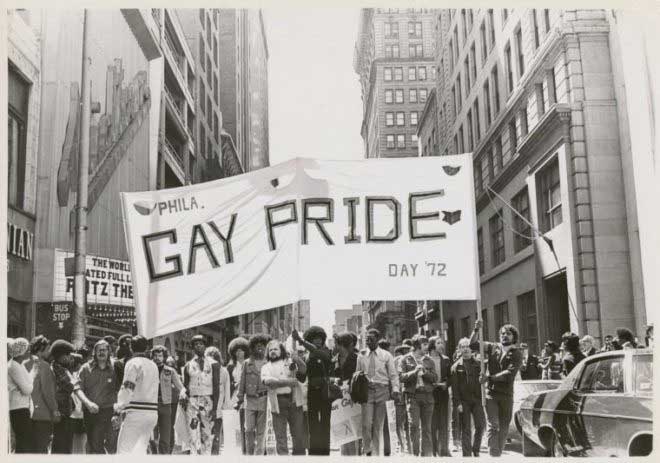
If you ask any of us who were part of organizing or marshaling that very first Pride in New York in 1970, you would hear one word about it: joy. Yes, it was a protest that came one year after Stonewall, but it was also a celebration of our fighting back. We were celebrating a community that we had begun to build that included organizations which delivered services, information and activities to the LGBT community, services that for the first time were not centered around then-illegal clubs and bars. So Pride actually translates to protest and celebration, and that Pride came from walking out of our West Village, Christopher Street Ghetto and marching publicly uptown to Central Park. We were Out, Loud, and Proud!
Today across the country there is a movement to “reclaim” that Pride. That can’t happen, since there can only be one original pride. Today’s activists aren’t the same as the ones who created Pride in New York or Philadelphia.
The ones who created it in Philadelphia were a brave lot. Most were from Gay Activist Alliance, Homophile Action League, Gay Raiders, Radical Queens and Temple Gay Students, toss in some fairies, and that was it.
So who was part of that first Pride in Philadelphia, and how inclusive were they? I asked Tommi Avicolli Mecca, who now lives in San Francisco but in the early 70’s was part and parcel of all things LGBT here in Philly. I particularly wanted to ask about BIPOC, Trans people, and nonbinary people.
“As I remember it,” Tommi said, “people of color and transpeople who were involved with the 72 and 73 march include: Cei Bell, Kiyoshi Kuromiya, Ada Bello (who was Cuban, if I remember correctly); a black lesbian whose name I can’t remember, I think she was from HAL; possibly Saj and Ray Henry (a black gay man from Temple GLF); myself and Sweet Basil Razzle Dazzle (from Philadelphia GLF, who did genderfuck, also known as radical drag). I identified back then as a drag queen or simply a queen. I identify now as gender non-conforming.”
Saj and I would go on to disrupt TV shows as part of the Gay Raiders, but at Pride, Saj did his day job, so to speak: he was part of the entertainment.
Those early Philadelphia marches in the 70’s were loose but had many of the elements of the New York march. If you took pride in yourself and your community, you were welcome to march. It was the one day we’d put down our differences and unite. It made it a joyous occasion which reminded me of the very first Pride in New York 1970 where I was a marshall. At about 17th street, I stopped for a moment and climbed a pole, and when I looked back I could still see people coming out of Christopher Street. It sent a chill of happiness down my back which I have never felt again in all these years.
Here in Philadelphia in the early 70’s Prides, like New York there was room for anyone and any identity, the idea was to make it possible for all who wanted to be a part to feel included. That went even as far as our parents. My mother was one of them. Her last Pride was 1977, and at that point she was in the last stages of kidney failure, so the Pride Committee hired a horse drawn carriage so she could be with us one last time. To keep her company Don Pignolet’s mother sat with her, and our fathers and other parents walked alongside with that sign “parents of Gays.”
In this season of Pride there is only one word I have for you: joy. Pride should bring you joy in yourself and your community.
